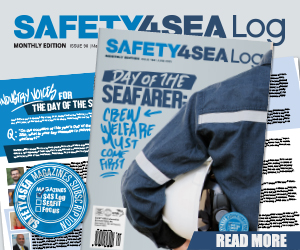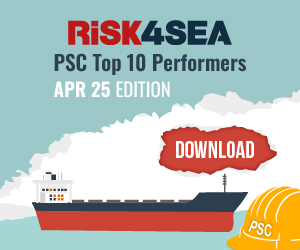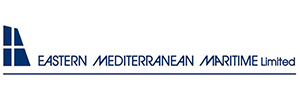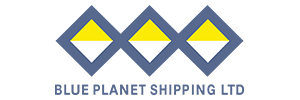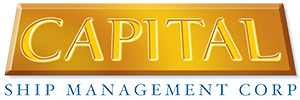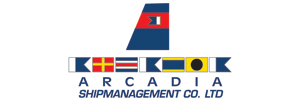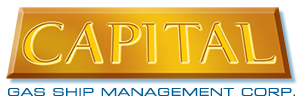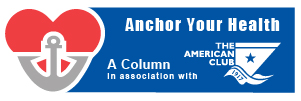NTSB has published an investigation report into the engine room fire aboard the towing vessel Johnny M that occurred in January 2024 in Tennessee.
The incident
On January 30, 2024, about 0330 local time, an engine room fire broke out aboard the towing vessel Johnny M, which was pushing four barges on the Tennessee River near Grand Rivers, Kentucky. The six crewmembers aboard were unable to extinguish the fire and abandoned ship to a Good Samaritan vessel. Local fire departments extinguished the fire. There were no injuries, and no pollution was reported. Damage to the vessel totaled $3 million.
Analysis
While the towing vessel Johnny M was maneuvering from a federal mooring cell in Kentucky Lake into the forebay of the Kentucky Lock and Dam, a fire started in the lower level of the engine room. Alarms sounded in the wheelhouse just before deckhand 1 noticed smoke coming from the Johnny M. Although the pilot, who was operating the vessel at the time, could not confirm with certainty the nature of the alarms, he recalled that one was for the port main engine.
A postcasualty examination of the vessel found that the port main engine was severely damaged. A report completed by a marine surveyor attributed the fire to the port main engine base “exploding.” Investigators found the nos. 1 and 2 connecting rods were forcibly separated from the crankshaft and their bearing caps broken off. Investigators attempted to determine the cause of the connecting rod failure. There were no indications that the port main engine was overloaded leading up to the casualty. Additionally, given that the port main engine had been overhauled about 7 months before the fire, with new components and bearings installed, excessive wear of engine components was likely not a reason for the connecting rod failure. Although the wheelhouse log noted the crew had “stopped to check [the] port main [engine]” the day before the fire, the operating company and crew did not provide additional information about this logbook entry. Neither the vessel owner nor the engine manufacturer completed a forensic examination or disassembly of components of the port main engine after the casualty. Therefore, investigators could not definitively determine why the connecting rod failed.
Pieces of the bearing caps for the disconnected nos. 1 and 2 connecting rods were found forcibly wedged between sections of the engine crankcase, in the immediate area, and the surfaces of the crankshaft journals were deformed, indicating the engine continued to run and the crankshaft continued to turn after the connecting rods had become disconnected. Parts from the disconnected connecting rods (including the bearing caps) would have collided randomly and chaotically as the crankshaft continued to turn, damaging other internal engine components—such as the crankshaft journals—blowing open the crankcase covers, and rupturing the crankcase (as the marine surveyor noted in his report). Hot, atomized lube oil would have vented through the openings. After the casualty, the outboard side of the port main engine showed signs of elevated temperatures. Therefore, the catastrophic engine failure likely resulted in the venting and ignition of hot atomized lube oil through the openings of the damaged port main engine.
After the fire ignited, the crew responded to contain the fire in accordance with the firefighting/emergency drills they performed regularly. They pulled the remote fuel shutoff cables for each engine, isolating the main fuel source from each engine. They also placed all available (four) covers on the intake fans and exhaust fans to the engine room on the upper deck and activated the CO2 fixed fire extinguishing system. Afterward, the fire appeared to be extinguished, and the smoke dissipated. However, the main engine combustion air intake openings—which supplied air through fabric-covered flexible ducting that extended from the aft side of each stack to each engine’s intake turbochargers—remained uncovered because the vessel was not outfitted with covers for these intake openings.
During their postcasualty investigation, investigators found that the fire had consumed the flexible ducting for the air intake openings. The flexible ducting was designed to be part of a closed system to provide combustion air to each engine’s turbochargers. However, the flexible ducting was made of combustible material; it was not structurally protected from fire (nor was it required to be). Therefore, as the ducting was consumed by the fire, it allowed oxygen from outside the vessel to enter the engine room through the uncovered air intake openings and feed the fire. Investigators could not determine when the ducting burned—before or after the crew activated the CO2 fixed fire extinguishing system (a postcasualty examination of the CO2 system indicated it had functioned as designed). However, given that the CO2 was ultimately ineffective in completely extinguishing the fire, it is likely that the ducting burned before or during the activation of the fixed fire extinguishing system.
Additionally, nearby combustible materials—the plastic sight glasses for the waste oil and lube oil tanks—would have melted, allowing oil to leak out and further fuel the fire. Fixed fire extinguishing systems in machinery and other hazardous spaces require a minimum concentration of extinguishing agent to either halt the chemical reaction producing the fire, displace the oxygen feeding the fire, or effect a combination of both. To ensure the effectiveness of the system and prevent the reintroduction of oxygen to the space, ventilation (both natural and forced draft) must be completely secured to all fire-protected spaces. Had the vessel been outfitted with covers for the main engine combustion air intake openings or the flexible ducting been made of a fire-resistant or noncombustible material or structurally protected from fire, oxygen likely would not have been able to enter the engine room, and the CO2 fixed fire extinguishing system likely would have been effective.
Conclusions
The National Transportation Safety Board determines that the probable cause of the engine room fire on the towing vessel Johnny M was a catastrophic main engine failure that caused the venting and ignition of hot atomized lube oil. Contributing to the ineffectiveness of the carbon dioxide fixed fire extinguishing system was the lack of structural fire protection for the main engines’ combustion air intake ducting, which allowed oxygen to enter the engine room once the fire consumed the ducting.
Lessons Learned
The flexible ducting providing combustion air to the main engines on board the Johnny M extended from the engine stacks on the main deck down to the engine room and did not have any insulation or other barriers to prevent the passage of smoke, heat, and fire—known as structural fire protection. This type of unprotected ducting has the potential to provide a pathway for fixed fire extinguishing agents, such as carbon dioxide, to escape and air to enter the engine room if the ducting is compromised by a fire within the space. Identifying potentially unprotected openings and ducting into a fire-protected space and incorporating structural fire protection can ensure the effectiveness of a fixed fire extinguishing system and prevent the spread of fire.









































